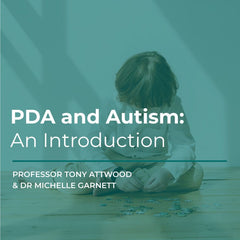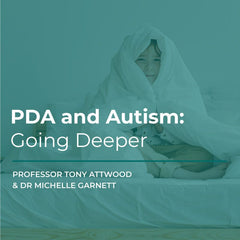What Does the Research Say About Current Best Practice to Support Individuals With PDA?

Pathological Demand Avoidance Syndrome (PDA) is a complex condition often associated with autism, characterised by extreme resistance to everyday demands and a need for control. Supporting individuals with PDA requires a collaborative approach, which means that everyone on the team of supporters for the person with PDA needs to be ‘on board.’ This can be challenging because PDA remains largely unrecognised, even amongst health professionals. Fortunately, the PDA profile is gaining broader recognition. Largely in response to autistic advocates and their allies, for example, Heidi Brandis of PDA Training Australia, who has published a helpful guide about how PDA has been formally recognised in Australia. Fortunately, research is available to inform current best practices for supporting individuals with a PDA profile. In this article, we outline the current best practices for supporting individuals with PDA, drawing on insights from recent research and clinical experience.
Understanding PDA and Its Impact
PDA is often described as a ‘behaviour profile’ within the autism spectrum, characterised by extreme demand avoidance, driven by high levels of anxiety. It is common for syndromes and profiles to be initially described by what other people can see, that is, their behaviour, so that others can recognise it. The behavioural profile of PDA has been described in the scientific literature as resistance to everyday demands, a ‘need for control,’ and the use of social strategies to avoid compliance to a perceived demand (Kamp-Becker et al., 2023a). Fortunately, the ‘internal’ or lived experience of PDA is also being researched to enrich our understanding (e.g., Kenny & Doyle, 2024).
To date, research suggests that PDA is not a standalone diagnostic entity but rather a profile that can occur within autism and other conditions. Whilst PDA was initially considered to be rare, occurring in 0.18% in a total population study (Gillberg et al, 2015), it is now considered to be much more common and occurring within a broad spectrum of neurodevelopmental, neurological, and psychiatric conditions, including language disorders, anorexia nervosa and Ehlers Danlos Syndrome, amongst others (Gillberg et al, 2024). It is essential to recognise that PDA behaviours represent coping mechanisms for underlying anxiety and the need for control in an unpredictable environment (Greaves, 2024; Kildahl et al., 2021).
Assessment and Diagnosis
Because PDA is currently regarded as a behavioural profile, rather than a distinct diagnostic category, diagnosis of PDA remains controversial. Current practice is to assess for PDA traits within a comprehensive diagnostic assessment, and should these be present, to describe the diagnosis of PDA as “a PDA profile.” Clinicians have found that identifying the profile is crucial for providing appropriate support.
Key considerations in assessment include:
- Anxiety as a driver of demand avoidance: Many individuals with PDA exhibit high levels of anxiety, which is often the primary driver of their avoidance behaviours (Lim et al., 2024; Greaves, 2024).
- Need for control: Individuals with PDA often engage in demand avoidance as a way to exert control over their environment (Kamp-Becker et al., 2023).
- Socially strategic avoidance: PDA individuals can use social strategies, for example, offering a compliment, to avoid demands, which can be mistaken for deliberate non-compliance (Kamp-Becker et al., 2023).
During the assessment process, adopting a neurodivergent affirming approach, considering the unique needs and experiences of the individual, is essential.
Support Strategies at School
Educational settings play a critical role in supporting students with PDA. Research emphasises the importance of a child-led, flexible approach to education (Doyle & Kenny, 2023; Truman, 2021). Lack of meaningful support at school for neurodivergent students with a PDA profile is associated with high levels of school distress and school nonattendance (Connolly, Constable & Mulally, 2023).
- Collaborative relationships: Building trust and collaboration between the student, school staff, and parents is essential. Involving the student in decision-making processes, for example, goal setting is an important aspect of the collaboration (Truman, 2021; Riches, 2023).
- Avoiding direct demands: Direct demands can escalate anxiety and resistance. When teachers and school staff use indirect techniques, such as offering choices or embedding demands within activities of interest, trust and collaboration increase (Dundon, 2021; McGuinty et al., 2023).
- Sensory and environmental adaptations: Ensuring the environment is sensory-friendly and free from overwhelming stimuli reduces anxiety and improves engagement (Riches, 2023; Renzo et al., 2020).
Therapy for Anxiety
Successful therapeutic approaches for PDA focus on reducing anxiety, improving emotional regulation, and enhancing coping strategies. Key interventions include:
- Dialectical Behaviour Therapy (DBT): Adapted DBT approaches, incorporating visual aids and gaming formats, have shown promise in addressing emotion dysregulation and challenging behaviours in individuals with PDA (Sakdalan & Maxwell, 2022; Keenan et al., 2023).
- Play-based and trauma-informed approaches: Play-based therapies allow individuals to process their experiences on their own terms, reducing feelings of control and anxiety (Dundon, 2021; Kihldahl et al., 2021)
- Cognitive Behavioural Therapy (CBT) adaptations: CBT can be modified to accommodate the unique needs of individuals with PDA, focusing on emotional literacy, special interests, and visual prompts (Riches, 2023).
Family and Caregiver Support
Families and caregivers play a vital role in supporting individuals with PDA. Research highlights the importance of:
- Parental education and training: Parents need to be equipped with an understanding of PDA and the strategies to manage demand avoidance and reduce anxiety in the home environment (Lim et al., 2024; Larner, 2023).
- Collaboration between families and professionals: A team approach, involving teachers, psychologists, and other healthcare providers as needed, is essential for ensuring consistent support across settings (Doyle & Kenny, 2023; Haire et al., 2023).
- Addressing parental stress: Supporting the mental health and well-being of parents is critical, because caring for an individual with PDA can be stressful, isolating, exhausting and lead to increased anxiety, depression and burnout without appropriate support and care (Lim et al., 2024; Kenny & Doyle, 2024).
Mental Health and Emotional Regulation
Individuals with PDA often experience significant emotional regulation difficulties, which can lead to mental health challenges such as anxiety disorders and depression. Key strategies for addressing these issues include:
- Anxiety reduction techniques: Therapy that utilises mindfulness, sensory integration, and emotional regulation strategies can help individuals manage anxiety and reduce their demand avoidance (Greaves, 2024; Lack et al., 2024).
- Neurodiversity-affirming approaches: Recognising and respecting the individual's lived experience is essential for building trust and promoting emotional well-being (Duan, 2022).
- Fluoxetine: In one unpublished study, 11 families found the use of fluoxetine (a selective serotonin reuptake inhibitor (SSRI)), medication often used for reducing anxiety, helpful to reduce PDA behaviours (Lim et al, 2024, under review).
Future Directions and Research Gaps
While current practices provide a foundation for supporting individuals
with PDA, there are several areas where further research and development are needed:
- Standardised assessment tools: There is a lack of validated tools for identifying and measuring PDA traits, which hinders recognition, appropriate support and therapy (Kamp-Becker et al., 2023; Kildahl et al., 2021).
- Long-term outcomes: Research on the long-term outcomes of individuals with PDA is limited, particularly in adulthood (Kenny & Doyle, 2024).
- Cultural and societal awareness: Increasing awareness of PDA across educational, healthcare, and societal systems is essential for improving support and reducing stigma (Doyle & Kenny, 2023).
Table: Comparison of Key Intervention Approaches for PDA
| Therapy | Key Features | Citation |
| DBT Adaptations | Incorporates visual aids, gaming formats, and client-initiated contributions. | (Sakdalan & Maxwell, 2022; Keenan et al., 2023) |
| Play-Based Therapy | Uses indirect techniques such as play to reduce anxiety and improve engagement. | (Dundon, 2021) |
| CBT Adaptations | Focuses on emotional literacy, special interests, and visual prompts. | (Riches, 2023) |
| Fluoxetine | Reduces disruptive behaviours and improves family quality of life. | (Lim et al., 2024, under review) |
Conclusions
Supporting individuals with PDA requires a compassionate, multi-disciplinary approach that is based on an understanding of PDA and the individual and their needs. A consistent approach across the team involved need to address educational needs (if at school age), mental health, and daily functioning. By adopting flexible, individualized strategies and prioritizing collaboration between parents, educators, and healthcare providers, we can improve outcomes and enhance the quality of life for individuals with PDA. Further research is needed to address gaps in assessment, intervention, and long-term support.
Where to from here?
We have created two half-day live webcasts exploring PDA in children, adolescents and adults:
PDA and Autism: An Introduction
The purpose of this training is to increase your understanding of PDA to assist you to recognise the profile your child, student or client, to increase your confidence in your role with these children and equip you with strategies to maximise positive outcomes.
We assume the knowledge presented in the first course and go deeper to explore strategies and how to best support the PDA-er and their family or partner.
References
Connolly SE, Constable HL, Mullally SL. (2023). School distress and the school attendance crisis: a story dominated by neurodivergence and unmet need. Front Psychiatry. 22;14:1237052. doi: 10.3389/fpsyt.2023.1237052.
Doyle, A. and Kenny, N. (2023), Mapping experiences of pathological demand avoidance in Ireland. J Res Spec Educ Needs, 23: 52-61. https://doi.org/10.1111/1471-3802.12579
Duan, L. (2022). “Pathological”/ “Extreme”/ “Rational” Demand-Avoidance: Reviewing and Refining its Contested Terrain Through an Educational Perspective. - A Frontiers in Education PDA special issue. https://doi.org/10.31219/osf.io/be65g
Gillberg C, Gillberg IC, Thompson L, Biskupsto R, & Billstedt E. (2015). Extreme ("pathological") demand avoidance in autism: a general population study in the Faroe Islands. Eur Child Adolesc Psychiatry, 24(8):979-84. doi: 10.1007/s00787-014-0647-3. Epub 2014 Nov 15. PMID: 25398390.
Gillberg, C ∙ Larsson, Y ∙ Billstedt, E (2024). Extreme or pathological demand avoidance: prioritising research to understand the prevalence and cause
Lancet Child Adolesc Health; 8:471-473.
Greaves, N. (2024). Emotion regulation difficulties and differences in autism including demand‐avoidant presentations—A clinical review of research and models, and a proposed conceptual formulation: Neural‐preferencing locus of control (NP‐LOC). JCPP Advances. https://doi.org/10.1002/jcv2.12270
Haire, L., Symonds, J. E., Senior, J., & Pace, U. (2023). Practicing psychologists’ accounts of demand avoidance and extreme demand avoidance in children and adolescents. Frontiers in Education. https://doi.org/10.3389/feduc.2023.1230014
Kamp-Becker, I., Schu, U., & Stroth, S. (2023). [Pathological Demand Avoidance: Current State of Research and Critical Discussion]. Zeitschrift Fur Kinder-Und Jugendpsychiatrie Und Psychotherapie. https://doi.org/10.1024/1422-4917/a000927
Keenan, E. G., Gurba, A., Mahaffey, B., & Lerner, M. D. (2023). Leveling Up Dialectical Behaviour Therapy for Autistic Individuals with Emotion Dysregulation: Clinical and Personal Insights. Autism in Adulthood. https://doi.org/10.1089/aut.2022.0011
Kenny, N., & Doyle, A. (2024). A phenomenological exploration of the lived experience of adults experiencing pathological demand avoidance. Neurodiversity. https://doi.org/10.1177/27546330241277075
Kildahl, A. N., Helverschou, S. B., Rysstad, A. L., Wigaard, E., Hellerud, J. M., Ludvigsen, L. B., & Howlin, P. (2021). Pathological demand avoidance in children and adolescents: A systematic review. Autism. https://doi.org/10.1177/13623613211034382
Lack, O., Griffin, A., Simonoff, E., & Happé, F. (2024). Understanding ‘Pathological Demand Avoidance’ in children and adults: A scoping review protocol. https://doi.org/10.31234/osf.io/mv3ej
Larner, G. (2023). Family therapy and autism spectrum, complex trauma, neurodiversity, school‐based filial therapy, postpartum depression, and more. Australian and New Zealand Journal of Family Therapy. https://doi.org/10.1002/anzf.1554
Lim, R. B. T., Yip, J., & Richardson, A. (2024; under review). Parental experiences in the use of fluoxetine for management of ‘disruptive behaviours’ in children and youth with autism and pathological demand avoidance – a mixed methods exploratory study (Fluoxetine study). https://doi.org/10.21203/rs.3.rs-4079890/v1
McGuinty, E., Carlson, A., & Nelson, J. (2023). A novel psychotherapy for low‐needs youth on the autism spectrum with emotional regulation challenges. Australian and New Zealand Journal of Family Therapy. https://doi.org/10.1002/anzf.1547
Riches, S. (2023). Adapting cognitive behaviour therapy for adults with autism: a lived experience-led consultation with specialist psychological therapists. The Cognitive Behaviour Therapist. https://doi.org/10.1017/s1754470x23000053
Sakdalan, J. A., & Maxwell, Y. (2022). The application of adapted dialectical behaviour therapy concepts and skills in the treatment of adults with autistic spectrum disorder who display challenging or offending behaviours. Advances in Autism. https://doi.org/10.1108/aia-01-2022-0002
Truman, C. (2021). The Teacher’s Introduction to Pathological Demand Avoidance. https://doi.org/10.5040/9781805015826


